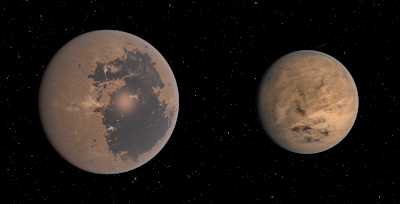
The confirmed planets of the system, Proxima b & d.
< Home

This project for Celestia collects custom textures for planetary systems within 10 parsecs of the Solar System. From 2020-2021 these were all combined in a single addon, which is still available here. Later, a forum thread was used for the project, and in April 2023 I made this web page for it. If you still want to download all of these addons at once, they're available in a Google Drive folder.
Many of these addons require an up-to-date nearstars.stc, which you can get from GitHub. However, no specific exoplanet catalog is required. While links to celestia.mobi are provided, keep in mind that the addons available there aren't always identical to the "Download" links. This is always a work in progress, and some systems may be listed but not have download links yet.
See also: pedro_jg's brown dwarf catalog, which includes 51 brown dwarfs (and ultracool stars) within 10 parsecs. Currently, addons for three of these objects are also available here: 2MASS J0348-6022, WISE J1217+1626, and WISE J1828+2650, which are compatible with the catalog since they use Replace statements.
Jump to:
4.3 ly | 3 stars | 2 planets
Alpha Centauri is the nearest star system to the Solar System. It consists of three stars - Alpha Centauri A (Rigil Kentaurus), Alpha Centauri B (Toliman), and Proxima Centauri, a red dwarf in a wide orbit around the main pair which is the nearest star to Sol.
Proxima is orbited by at least two known planets - Proxima b, a terrestrial planet in the habitable zone, and Proxima d, an inner sub-Earth. The existence of Proxima c, an outer mini-Neptune, is currently disputed. Alpha Centauri A may also host a candidate Neptune-to-Saturn size planet in its habitable zone.
Authors: SevenSpheres, fyr02, Gurren Lagann, ChelseaZ, Daly, LukeCEL, Runar Thorvaldsen, MrSpace43
Other addons (some incorporated into this version): fyr02, Gurren Lagann, ChelseaZ, MrSpace43
Download | celestia.mobi - Last updated 2023-04-03

The confirmed planets of the system, Proxima b & d.
6.0 ly | 1 star | 4 planets
Barnard's Star is a red dwarf star that is the second-nearest star system to Sol, and has the highest proper motion of any star. It hosts a system of four close-orbiting sub-Earth mass planets; previously, it was subject to multiple claims of planets that were later disproven.
Authors: Hydrix, Gurren Lagann (original release)
Download | celestia.mobi - Last updated 2025-03-13
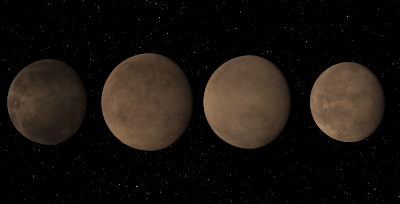
6.5 ly | 2 brown dwarfs
Luhman 16 is a binary brown dwarf system, containing the nearest brown dwarfs to Sol. The system seems to be fairly young, with an age of about 510 million years. Observations using the Very Large Telescope have allowed the creation of a map of Luhman 16 B.
Authors: Steve Bowers
Download | celestia.mobi - Last updated 2023-05-20

7.4 ly | 1 brown dwarf
WISE 0855-0714 is a very cool, planetary mass, free-floating Y-dwarf, which could be considered a rogue planet. It is the closest celestial object to the Sirius system. (Moon in image not included.)
Authors: SevenSpheres, cubicApoc
Download | celestia.mobi - Last updated 2023-05-20
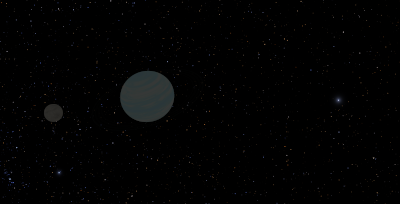
7.9 ly | 1 star
Wolf 359 is a red dwarf star which may host a candidate planet, found by a preliminary survey in 2019. A second candidate planet was refuted in 2021; the radial velocity signal was actually caused by the rotation of the star. (Trolligi's textures set as default; image using alternate surface.)
Authors: SevenSpheres, Trolligi (original release)
Download | celestia.mobi - Last updated 2024-09-08
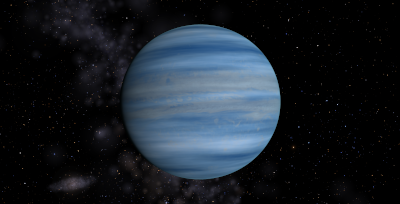
8.3 ly | 1 star | 2 planets
Lalande 21185 (also known as Gliese 411) is a red dwarf star which hosts two known planets, a super-Earth and one of the few known Neptune analogues, discovered in 2019 & 2021.
Authors: SevenSpheres
Download | celestia.mobi - Last updated 2022-08-05
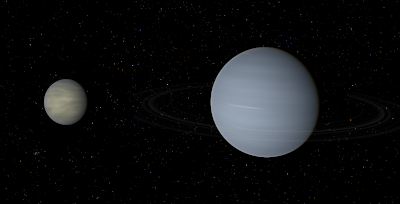
8.6 ly | 2 stars
Sirius is the brightest star in the night sky. It is a binary star system, consisting of an A-type main-sequence star and a white dwarf, both of which are the nearest stars of their type.
Authors: Gurren Lagann
Download | celestia.mobi - Last updated 2023-05-20
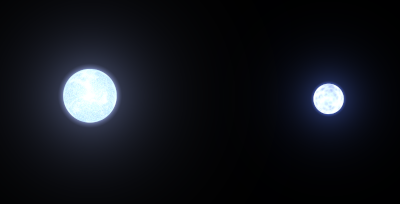
10.5 ly | 1 star | 1 planet
Epsilon Eridani (also named Ran) is a fairly young star system with multiple debris disks. It has one confirmed planet, the Jupiter analogue Epsilon Eridani b (also named Ægir), with one or two additional planet candidates having been proposed based on disk morphology.
Authors: SevenSpheres | Other addon: Chara (celestia.mobi)
Download | celestia.mobi - Last updated 2025-03-03
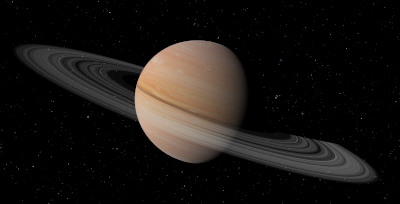
10.7 ly | 1 star | 2 planets
Gliese 887, also known as Lacaille 9352, is a red dwarf star which hosts two known planets, both super-Earths or mini-Neptunes in relatively close orbits, confirmed in 2020.
Authors: SevenSpheres
Download | celestia.mobi - Last updated 2022-08-06

11.0 ly | 1 star | 1 planet
Ross 128 is a red dwarf star orbited by a single known planet, which is likely terrestrial and orbits near the inner edge of the habitable zone.
Authors: Gurren Lagann (original release), trappistplanets (original release)
Download | celestia.mobi - Last updated 2024-09-08

11.5 ly | 2 stars | 1 planet
Gliese 725, also known as Struve 2398, is a binary star system consisting of two red dwarfs. The primary star hosts a super-Earth; the secondary star may also host two planet candidates. (Trolligi's textures set as default; image using alternate surfaces.)
Authors: SevenSpheres, Trolligi (original release)
Download | celestia.mobi - Last updated 2022-08-09, needs update
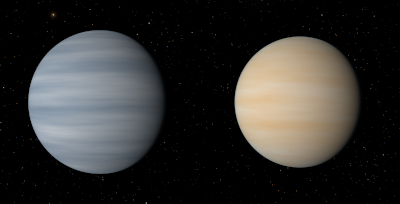
11.6 ly | 2 stars | 2 planets
Gliese 15, also known as Groombridge 34, is a binary star system consisting of two red dwarfs. The secondary star hosts two known planets, discovered in 2014 & 2018.
Authors: SevenSpheres
Download | celestia.mobi - Last updated 2022-08-09
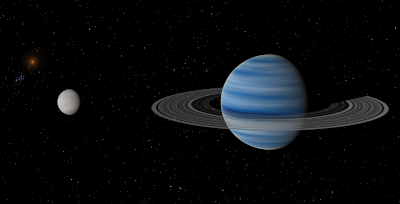
11.9 ly | 1 star | 2 brown dwarfs | 1 planet
Epsilon Indi is a K-type star with a pair of brown dwarfs orbiting it at a wide distance. The primary star hosts one known planet, the super-Jupiter Epsilon Indi Ab, confirmed in 2018. This planet was directly imaged by the James Webb Space Telescope in 2023 and is currently the nearest imaged exoplanet.
Authors: SevenSpheres
Download | celestia.mobi - Last updated 2025-02-16
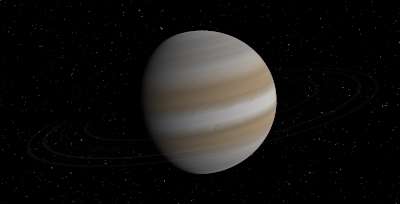
11.9 ly | 1 star
Tau Ceti is the nearest single G-type star to Sol. It is known to have a debris disk, and likely at least four planets, including two super-Earths or mini-Neptunes orbiting near the habitable zone. This addon textures the four strong planet candidates and two additional candidates.
Authors: fyr02 (original release), SevenSpheres
Download | celestia.mobi - Last updated 2023-07-23
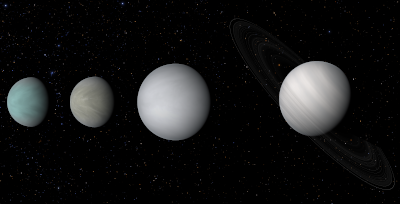
12.0 ly | 1 star | 3 planets
GJ 1061 is a red dwarf star which hosts three known planets, all of which are likely terrestrial. The outer planet (d) orbits within the habitable zone, while the middle planet (c) is near the inner edge.
Authors: SevenSpheres
Download | celestia.mobi - Last updated 2025-04-25

12.1 ly | 1 star | 3 planets
YZ Ceti is a red dwarf star which hosts three known hot terrestrial planets, one potentially smaller than Earth, discovered in 2017. The system is only about 1.6 light-years from Tau Ceti. Radio emissions have been observed from the star, caused by magnetic interaction with the innermost planet, YZ Ceti b.
Authors: SevenSpheres
Download | celestia.mobi - Last updated 2022-11-25

12.3 ly | 1 star | 2 planets
Luyten's Star, also known as Gliese 273, is a red dwarf which hosts two confirmed planets and two candidates, including a super-Earth in the habitable zone. The system is only about 1.1 light-years from Procyon.
Authors: SevenSpheres
Download | celestia.mobi - Last updated 2022-11-25
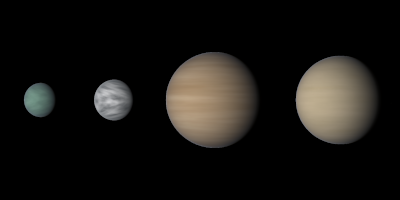
12.5 ly | 1 star | 3 planets
Teegarden's Star is a red dwarf star which hosts three known Earth-mass planets. Two orbit within the habitable zone, while one is farther out; it is the nearest cold terran planet known.
Authors: SevenSpheres, MrSpace43
Download | celestia.mobi - Last updated 2024-02-10

13.1 ly | 1 star | 1 brown dwarf
SCR J1845-6357 is a binary system consisting of a cool, dim red dwarf star and a brown dwarf.
Authors: Gurren Lagann
Download | celestia.mobi - Last updated 2023-05-20
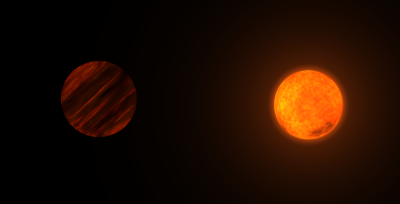
13.4 ly | 1 brown dwarf
UGPS J0722-0540 is a cool, borderline planetary-mass brown dwarf.
Authors: Gurren Lagann (original release)
Download | celestia.mobi - Last updated 2023-05-20
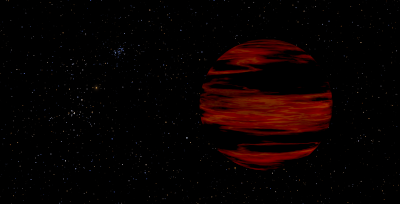
14.1 ly | 1 star | 3 planets
Wolf 1061, also known as Gliese 628, is a red dwarf star which hosts three known planets discovered in 2015, including a super-Earth at the inner edge of the habitable zone.
Authors: SevenSpheres, fyr02 (original release)
Download | celestia.mobi - Last updated 2023-06-07
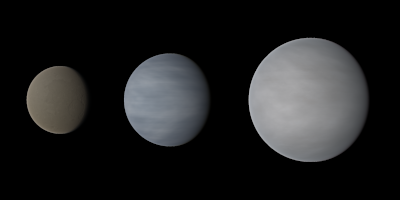
14.6 ly | 1 star | 1 planet
TZ Arietis (also known as Gliese 83.1 or GJ 9066) is a red dwarf star orbited by a single gas giant planet on an eccentric orbit. Two additional planet candidates proposed to exist in the system were disproven in 2022.
Authors: SevenSpheres
Download | celestia.mobi - Last updated 2022-11-25
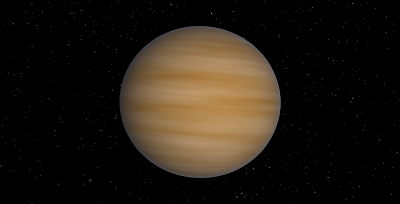
14.8 ly | 1 star | 2 planets
Gliese 687 is a red dwarf star which hosts two known Neptune-like planets.
Authors: SevenSpheres
Download | celestia.mobi - Last updated 2023-06-03

14.8 ly | 1 star | 1 planet
Gliese 674 is a red dwarf star which hosts one known planet, a hot Neptune discovered in 2007.
Authors: SevenSpheres
Download | celestia.mobi - Last updated 2024-09-08
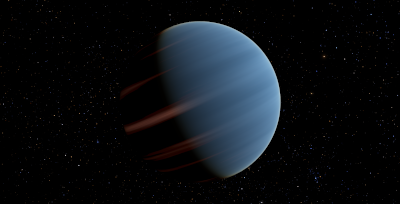
15.1 ly | 1 star
Gliese 440 (also LAWD 37, L 145-141) is a white dwarf star which may host a candidate planet, identified with Gaia astrometry.
Authors: Gurren Lagann (original release)
Download | celestia.mobi - Last updated 2023-08-08
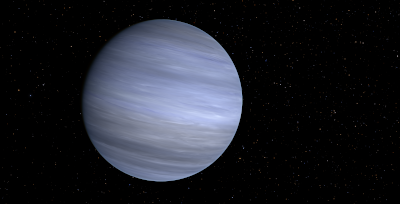
15.2 ly | 1 star | 4 planets
Gliese 876 hosts four planets, and is a system of many firsts - the first extrasolar planetary system discovered within 10 parsecs, the first around a red dwarf star, and the first with orbital resonances; the first confirmed exoplanet detected by astrometry; and the first super-Earth.
Authors: SevenSpheres, John van Vliet (original release)
Download | celestia.mobi - Last updated 2023-07-24

15.8 ly | 1 star | 2 planets
GJ 1002 is a red dwarf star which hosts two known planets, both likely terrestrial and orbiting within the habitable zone.
Authors: Gurren Lagann (original release)
Download | celestia.mobi - Last updated 2023-07-28
16.2 ly | 1 star | 1 planet
Gliese 832 is a red dwarf star orbited by a Jupiter-like planet. From 2014 to 2022 a second planet, a super-Earth in the habitable zone, was also thought to exist, but has been shown to be an artifact of stellar activity.
Authors: SevenSpheres
Download | celestia.mobi - Last updated 2023-08-11

16.3 ly | 3 stars
Keid or 40 Eridani is a triple star system consisting of a K-type main-sequence star, a white dwarf, and a red dwarf. In 2018, a candidate planet half the mass of Neptune was found orbiting the primary star, but was questioned due to the similarity of its orbital period and the star's rotation period, and eventually found to be a false positive in 2023.
16.5 ly | 1 star
EV Lacertae is a red dwarf star known for large flares, in particular one in 2008.
Authors: SevenSpheres, Gurren Lagann, Runar Thorvaldsen, MrSpace43
Download | celestia.mobi - Last updated 2024-09-08
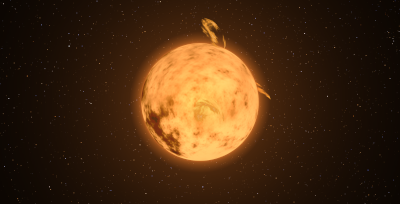
17.5 ly | 1 star | 2 planets
GJ 3323 is a red dwarf star which hosts two super-Earths discovered in 2017, both of which are just outside the habitable zone, orbiting near the inner and outer edges.
Authors: Trolligi, Steve Bowers (original release)
Download | celestia.mobi - Last updated 2023-05-28
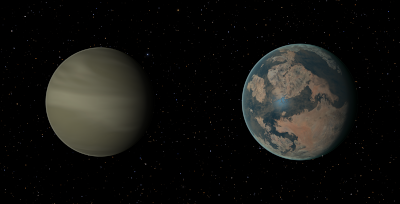
18.2 ly | 1 star | 1 planet
Gliese 251 is a red dwarf star orbited by a super-Earth or mini-Neptune, discovered in 2020.
Authors: Trolligi (original release)
Download | celestia.mobi - Last updated 2022-12-21
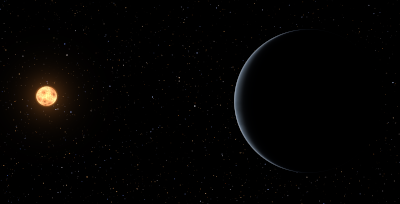
18.8 ly | 1 star | 2 brown dwarfs
Gliese 229 is a red dwarf star with a pair of brown dwarf companions. Gliese 229 B was one of the first brown dwarfs discovered, and the first within 10 parsecs, but was only resolved into a binary much later in 2024. The primary star was once thought to host two planets, but they now appear to be artifacts of stellar activity.
Authors: Trolligi (original release)
Download | celestia.mobi - Last updated 2025-03-03

19.3 ly | 2 stars | 1 planet
Gliese 752 is a binary system of two red dwarf stars, with one known planet in orbit around the primary. The secondary star is also called VB 10 and is known for its low mass and luminosity.
Authors: The Minmus Derp (original release)
Download | celestia.mobi - Last updated 2022-12-21

19.7 ly | 1 star | 3 planets
82 (G.) Eridani is a Sun-like star with a debris disk and three known planets, the outermost a super-Earth or mini-Neptune on an eccentric orbit partially within the habitable zone. Other planet candidates have been proposed but are now doubtful after non-detections.
Authors: fyr02 (original release), SevenSpheres | Other addon: Astro
Download | celestia.mobi - Last updated 2025-02-16

20.0 ly | 1 brown dwarf
2MASS J0136+0933 (SIMP J0136+0933) is a borderline planetary-mass T-type brown dwarf which shows evidence of aurorae.
Authors: SpaceStalker (original release)
Download | celestia.mobi - Last updated 2023-05-20
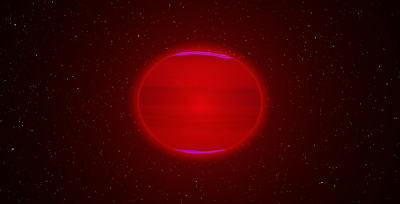
20.4 ly | 1 star | 1 planet
HN Librae, also known as Gliese 555, is a red dwarf star which hosts at least one planet, a super-Earth or mini-Neptune in the habitable zone.
Authors: SevenSpheres
Download | celestia.mobi - Last updated 2023-07-22

20.4 ly | 2 stars | 1 planet
EQ Pegasi, also known as Gliese 896, is a binary system of two red dwarf stars. The primary star hosts a Jupiter-like planet discovered in 2022, which is one of the very few confirmed exoplanets discovered entirely using astrometry.
Authors: Gurren Lagann (original release)
Download | celestia.mobi - Last updated 2022-12-22

20.5 ly | 1 star | 3 planets
Gliese 581 has had a complicated history, with up to 6 planets being proposed at one point, some of them described as potentially habitable. More recently, several studies have shown that the signals corresponding to the three outer planets are artifacts of stellar activity, and the current consensus is that the system has only three planets.
Authors: MrSpace43 (original release), John van Vliet (original release)
Download | celestia.mobi - Last updated 2025-04-25
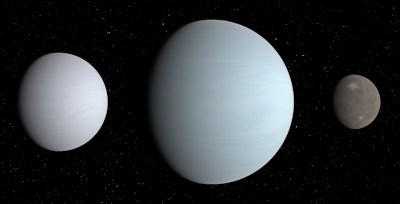
20.7 ly | 2 stars | 1 planet
Gliese 338 is a binary system of two red dwarf stars, with one known planet in orbit around the secondary star.
Authors: The Minmus Derp (original release)
Download | celestia.mobi - Last updated 2022-12-22

21.1 ly | 1 star | 1 planet
Gliese 625 is a red dwarf star which hosts one known super-Earth, receiving a similar amount of radiation from its star to Venus.
Authors: Gurren Lagann (original release)
Download | celestia.mobi - Last updated 2023-02-12
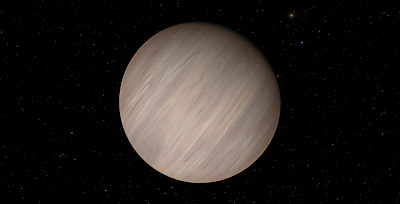
21.3 ly | 1 star | 6 planets
Gliese 892, also known as HD 219134, is a K-type star which hosts five confirmed planets and an uncertain sixth discovered in 2015, including 2 transiting rocky super-Earths, 3 Neptunians, and 1 Jovian.
Authors: SevenSpheres
Download | celestia.mobi - Last updated 2022-12-23
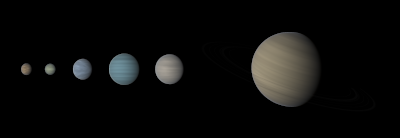
22.4 ly | 3 stars | 3 planets
LTT 1445 is a triple star system consisting of three red dwarfs. The primary star hosts two transiting terrestrial planets, discovered by TESS in 2019 & 2021, and a third non-transiting planet discovered in 2022.
Authors: Trolligi, Steve Bowers (original release)
Download | celestia.mobi - Last updated 2023-09-01
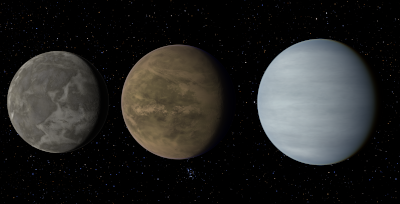
23.0 ly | 1 star | 1 planet
Gliese 393 is a red dwarf star which hosts one known hot terrestrial planet.
Authors: Trolligi (original release)
Download | celestia.mobi - Last updated 2022-12-23
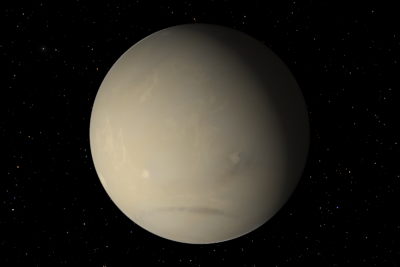
23.6 ly | 3 stars | 2 planets
Gliese 667 C has two confirmed planets, one of which is a super-Earth in the habitable zone. At one point a total of up to 6 or 7 planet candidates were proposed, but later work showed that most of these signals were likely to be artifacts of stellar activity, with a potential third planet remaining uncertain. This addon includes the two confirmed planets as well as the third candidate.
Authors: fyr02 (original release, part of "From The Vault")
Download | celestia.mobi - Last updated 2022-12-23
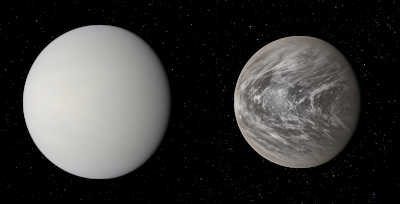
24.9 ly | 1 star | 1 planet
Gliese 514 is a red dwarf star, which hosts one known super-Earth or mini-Neptune on an eccentric orbit partially within the habitable zone.
Authors: Gurren Lagann (original release)
Download | celestia.mobi - Last updated 2022-12-24

25.0 ly | 1 star
Vega is a young, rapidly-rotating A-type star with a protoplanetary disk. While no planets have been confirmed around it, the potential detection of a close-orbiting gas giant planet was announced in 2021.
Authors: Cham (original release), Gurren Lagann (original release)
Download | celestia.mobi - Last updated 2023-02-21
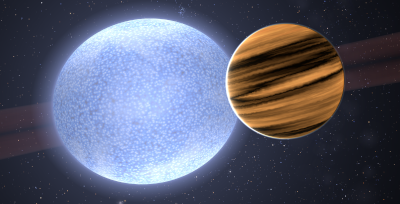
25.1 ly | 3 stars
Fomalhaut is a young A-type star that is the primary star of a wide triple system. It hosts a protoplanetary disk, with a directly imaged object (Fomalhaut b or Dagon) that was initially thought to be a planet, but in 2020 was found to be a cloud of debris from a major collision. Only the disk is modeled in this addon.
Authors: Cham (original release)
Download | celestia.mobi - Last updated 2022-12-24
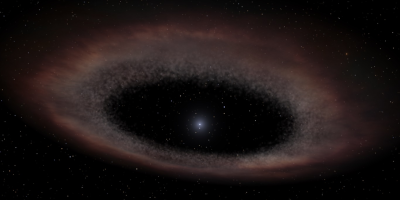
26.2 ly | 1 star | 1 planet
GJ 1151 is a red dwarf star with at least one known planet, a Neptune-like world discovered in 2023. Radio emissions from the star suggest magnetic interaction with a short-period planet, a detection of which was claimed but then refuted in 2021. If such a planet does exist, it cannot be much more massive than Earth.
Authors: SevenSpheres
Download | celestia.mobi - Last updated 2023-06-03

26.4 ly | 1 star | 1 planet
Gliese 486 is a red dwarf star which hosts one known transiting hot terrestrial planet, discovered in 2021. Like other similar planets, there is evidence that it lacks a significant atmosphere. The star and planet received the names Gar and Su in 2023.
Authors: SevenSpheres, Gurren Lagann (original release)
Download | celestia.mobi - Last updated 2025-02-17

26.5 ly | 1 star
Gliese 300 is a red dwarf star which may host a candidate planet, found by a preliminary survey in 2019.
Authors: Galaxy-Leaper
Download | celestia.mobi - Last updated 2025-02-15
26.6 ly | 1 star | 1 planet
Gliese 686 is a red dwarf star which hosts one known sub-Neptune mass planet, discovered in 2019.
Authors: Gurren Lagann (original release)
Download | celestia.mobi - Last updated 2023-09-30
27.2 ly | 1 brown dwarf
2MASS J0348-6022 is a rapidly-rotating, oblate brown dwarf, with a rotation period of only 1 hour.
(This is basically identical to the original addon, which also includes 2 other brown dwarfs; there's no need to download this if you have that.)
Authors: pedro_jg (original release)
Download | celestia.mobi - Last updated 2022-12-23
27.3 ly | 1 star | 1 planet
GJ 1289 is a red dwarf star which hosts one known planet, a cool sub-Neptune discovered in 2024.
Authors: Karistus (original release)
Download | celestia.mobi - Last updated 2025-02-19
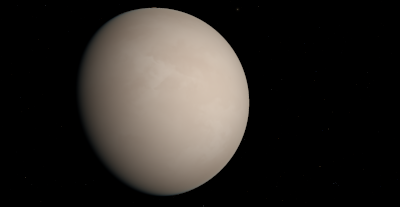
27.8 ly | 1 star | 3 planets
61 Virginis is a G-type star which hosts a debris disk and three known planets, an inner super-Earth or mini-Neptune and two outer Neptunes.
Authors: Steve Bowers, Chara
Download | celestia.mobi - Last updated 2025-02-16

28.1 ly | 1 star | 1 planet
CD Ceti is a red dwarf star which hosts one known super-Earth mass planet, discovered in 2020.
Authors: Gurren Lagann (original release)
Download | celestia.mobi - Last updated 2023-09-30
28.7 ly | 1 star | 2 planets
Gliese 785, also known as HD 192310, is a K-type star which hosts two Neptunian planets, discovered in 2010 & 2011.
Authors: Trolligi (original release)
Download | celestia.mobi - Last updated 2023-09-01
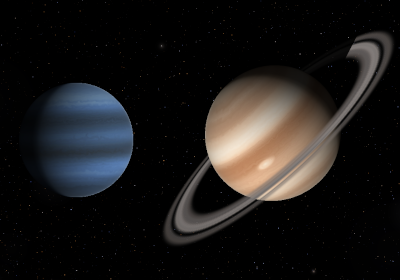
28.8 ly | 1 star | 2 planets
Gliese 849 is a red dwarf star which hosts two cold Jovian planets.
Authors: Trolligi (original release)
Download | celestia.mobi - Last updated 2023-06-07
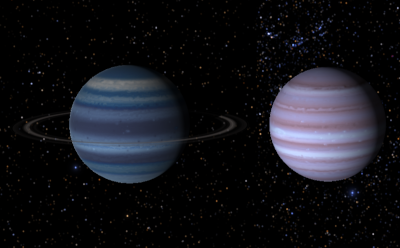
29.6 ly | 1 star | 3 planets
Gliese 433 is a red dwarf star which hosts three planets, two sub-Neptunes and a super-Neptune, at a wide range of distances. The middle planet (Gliese 433 d) orbits within the habitable zone.
Authors: SolHorizon (original release), Steve Bowers
Download | celestia.mobi - Last updated 2023-02-10

30.4 ly | 2 stars | 1 planet
HD 102365 is a binary system of a Sun-like star and a red dwarf, with a Neptune-mass planet around the primary star.
Authors: Gurren Lagann (original release)
Download | celestia.mobi - Last updated 2024-02-06
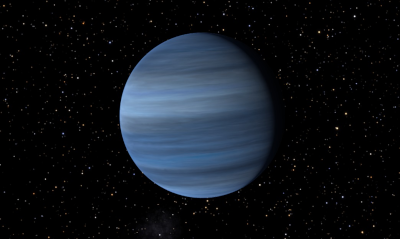
30.4 ly | 2 brown dwarfs
WISE J1217+1626 is a binary brown dwarf system, consisting of two cool brown dwarfs about 20-30 times the mass of Jupiter. The lower-mass brown dwarf (WISE J1217+1626 B) is listed as a "planet" in the NASA Exoplanet Archive.
Authors: Gurren Lagann (original release), SevenSpheres
Download | celestia.mobi - Last updated 2025-04-25

30.7 ly | 1 star | 3 planets
Gliese 367 is a red dwarf star which hosts a transiting sub-Earth-sized planet in a very close orbit, which probably has a molten surface, as well as two outer super-Earth-mass planets. The star and innermost planet received the names Añañuca and Tahay in 2023.
Authors: SevenSpheres
Download | celestia.mobi - Last updated 2023-07-24

30.8 ly | 1 star | 3 planets
Gliese 357 is a red dwarf star which hosts three known planets, discovered in 2019. The innermost planet is a transiting terrestrial planet, while the outermost is a super-Earth or mini-Neptune in the habitable zone.
Authors: fyr02 (original release, part of "From The Vault")
Download | celestia.mobi - Last updated 2023-02-10
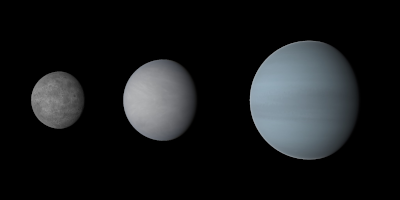
30.9 ly | 1 star | 1 planet
Gliese 176 is a red dwarf star which hosts one known sub-Neptune planet discovered in 2008, with a second candidate planet found by a preliminary survey in 2019.
Authors: Gurren Lagann (original release)
Download | celestia.mobi - Last updated 2023-02-11

31.0 ly | 1 star | 2 planets
GJ 3512 is a red dwarf star which hosts two known gas giant planets, the inner one of which has an eccentric orbit and a relatively low mass ratio with its low-mass host star.
Authors: Gurren Lagann (original release)
Download | celestia.mobi - Last updated 2023-05-28
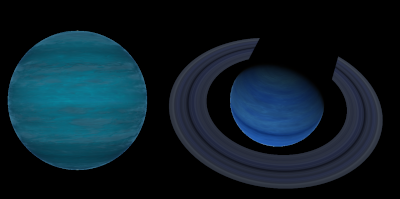
31.1 ly | 1 star | 2 planets
G 192-15 (or GJ 3380) is a red dwarf star which hosts a hot rocky planet and an eccentric cold Neptune, discovered in 2025.
Authors: Karistus (original release)
Download | celestia.mobi - Last updated 2025-04-25
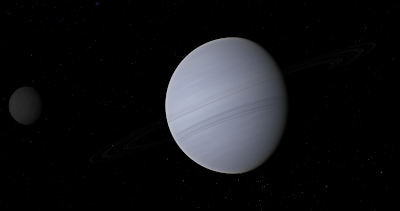
31.2 ly | 1 star | 1 planet
Wolf 1069 is a red dwarf star which hosts one known planet, which is likely terrestrial and orbits within the habitable zone.
Authors: Gurren Lagann (original release)
Download | celestia.mobi - Last updated 2023-07-28
31.6 ly | 2 stars
Gliese 680 is a binary system of two red dwarf stars. There is no known third body; the brown dwarf apparently detected in 2022 was actually the previously known stellar companion.
Authors: SevenSpheres
Download | celestia.mobi - Last updated 2025-02-16
31.7 ly | 3 stars | 3 planets
AU Microscopii is a young red dwarf star with a circumstellar disk. It hosts two transiting Neptunian planets, the outer of which may be unusually dense, and a likely third planet about the mass of Earth, with signs of a possible fourth planet as well. It forms a wide triple system with the binary star AT Microscopii.
Authors: SevenSpheres, LukeCEL, Cham, Runar Thorvaldsen, MrSpace43
Download | celestia.mobi - Last updated 2023-07-23, needs update

31.9 ly | 1 star | 1 planet
Gliese 436 is a red dwarf star which hosts a hot Neptunian planet discovered in 2004, which was found to transit in 2007. The planet has been observed to have an evaporating atmosphere, forming a tail. This likely wouldn't be visible to the eye, but is included as a scripted, toggleable feature. The star and planet received the names Noquisi and Awohali in 2023.
Authors: MrSpace43 (original release), Trolligi, LukeCEL
Download | celestia.mobi - Last updated 2023-07-22
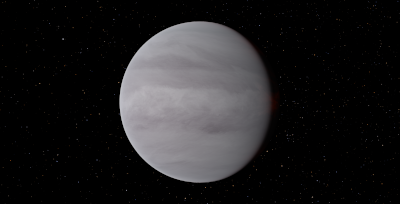
31.9 ly | 1 star | 1 planet
G 268-110 (or GJ 1028) is a red dwarf star which hosts a hot terrestrial planet, discovered in 2025.
32.2 ly | 2 stars | 1 planet
Gliese 49 is a red dwarf star forming a wide binary with another red dwarf, Gliese 51. Gliese 49 is host to a warm mini-Neptune mass planet that completes an orbit every two weeks.
Authors: Karistus (original release)
Download | celestia.mobi - Last updated 2023-09-01

32.3 ly | 1 star | 1 planet
GJ 3988 is a red dwarf star which hosts one known super-Earth mass planet, discovered in 2023.
Authors: Gurren Lagann (original release)
Download | celestia.mobi - Last updated 2024-02-06
32.5 ly | 2 brown dwarfs
WISE 1828+2650 is a very cool, planetary mass, free-floating Y-dwarf. While it could be considered a rogue planet, it is most likely a brown dwarf in terms of formation. There is evidence that it may be a very close binary pair, but this has not yet been confirmed. Basically a clone of the WISE 0855-0714 addon.
Authors: SevenSpheres, cubicApoc
Download | celestia.mobi - Last updated 2024-09-08
32.6 ly | 1 star | 2 planets
HD 260655 is a red dwarf star which hosts two transiting planets, a terrestrial and a super-Earth, discovered by TESS in 2022.
Authors: Trolligi (original release)
Download | celestia.mobi - Last updated 2023-02-11

Many texture addons have also been made for planetary systems that are beyond 10 parsecs, but still nearby. This is a list of additional planetary systems with addons out to 30 parsecs, sorted by distance. Note that these addons are from a number of different authors and sources, and haven't been standardized like those in this project, so some of them may need modifications (such as Replace statements).
Some addons have been made for exoplanets that were once thought to exist in nearby systems, but were later disproven. Most of these were made when the planets in question were thought to exist (some of which were included in Nearby Exoplanets and have been moved here), while some were made after the planets were considered disproven. I've made this list to keep track of these addons.
An ssc file using the Timeline function to show the evolution of our understanding of the Gliese 581 system over time can be downloaded from this link.
